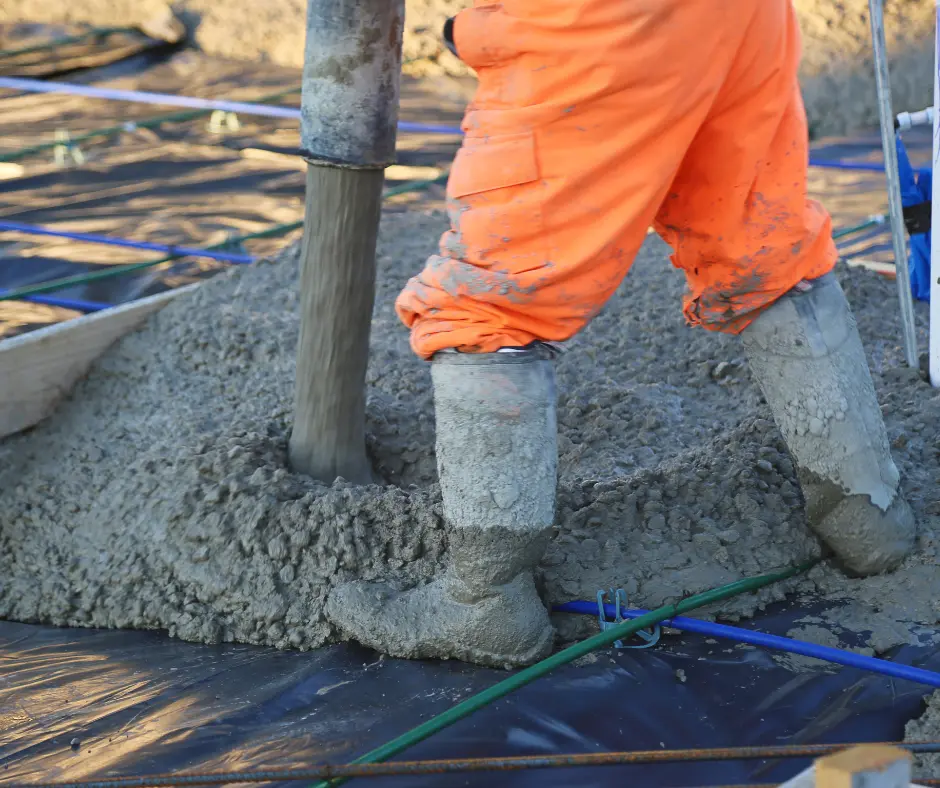
The Process of Installing Post-Tension Foundations
Ever wondered what lies beneath the marvels of modern architecture, keeping them sturdy and resilient? The secret often lies in Post-Tension Foundations, a game-changer in building technology. Let’s delve into the intriguing process of how these foundations are installed, making buildings safer and long-lasting!
Understanding the Basics of Post-Tension Foundations
Post-tension foundations, a cornerstone of modern architecture, leverage high-strength steel tendons strategically embedded within concrete to enhance its natural strength. Unlike traditional reinforcement, post-tensioning allows for thinner slabs and longer spans without compromising structural integrity, making it an enticing choice for buildings exposed to dynamic forces.
The magic begins with the tension applied to these tendons after the concrete has set, compressing the concrete and arming it against tensile forces. This fascinating interplay between tension and compression brings forth an unparalleled level of durability and flexibility.
The Benefits of Choosing Post-Tension Foundations
Opting for post-tension foundations spells numerous benefits, key among them being enhanced structural integrity and the ability to withstand adverse conditions like earthquakes and high winds.
Furthermore, this innovative foundation type allows for slimmer construction profiles, resulting in significant material savings and, consequently, lower project costs. But the advantages don’t end there; post-tensioning facilitates faster construction times and offers increased flexibility in design, allowing architects to push the boundaries of creativity and innovation.
Planning and Preparation: The First Steps
The journey to installing a post-tension foundation begins long before the concrete is poured. It starts with a rigorous planning phase where engineers and architects come together to design a foundation that not only supports the intended structure but also aligns with the soil characteristics of the construction site.
Engineers analyze the soil to ensure the ground can support the tensioning process. They then create detailed blueprints that specify the tendon positioning to optimize structural integrity. Preparation also involves procuring high-quality materials and ensuring all safety measures are in place, setting the stage for a flawless installation process.
Following meticulous planning, the preparation of the foundation site takes center stage. This involves the excavation of the site to the required depth, followed by creating a formwork that shapes the concrete.
Special attention is paid to the layout of the tendons, which are strategically placed according to the foundation’s design specifications.
These preparations are crucial for a successful installation, as they ensure that the foundation will be capable of bearing the planned loads and stresses.
Executing the Installation: A Step-by-Step Guide
With the groundwork laid, the actual installation of a post-tension foundation begins, marked by the pouring of concrete into the prepared formwork.
Workers must execute this step with precision to avoid air pockets and ensure the concrete evenly envelops the tendons. Once the concrete sets, technicians take the next pivotal step of tensioning the tendons.
Using hydraulic jacks, skilled technicians apply precise tension to the tendons and securely anchor them in place.
This process compresses the concrete, imparting the foundation with its enhanced strength and flexibility.
Post-Installation: What Comes After
The post-installation stage begins with tensioning and securing the tendons. During this phase, inspectors meticulously verify the foundation’s integrity and ensure it complies with the design specifications.
Next, workers implement protective measures to safeguard the tendons from potential corrosion, which extends the foundation’s longevity. Finally, they backfill the site and allow the foundation to cure, creating a robust base ready to support the intended structure.
Common Challenges and Solutions in Installing Post-Tension Foundations
The installation of post-tension foundations, while rewarding, is not without its challenges. Ensuring uniform tension in the tendons presents a significant challenge, as discrepancies can cause uneven stress distribution. Engineers use advanced monitoring tools to accurately gauge and adjust the tension, effectively addressing this issue.
Another potential issue is the risk of tendon corrosion, which can compromise the foundation’s integrity. This is mitigated by applying protective coatings to the tendons and using corrosion-resistant materials. Skilled engineers and technicians anticipate and address these challenges, ensuring the foundation’s reliability and longevity.
Maintaining Your Post-Tension Foundation: Tips and Best Practices
Maintaining a post-tension foundation is paramount for ensuring its longevity and effectiveness. Regular inspections play a crucial role in identifying potential issues early on, such as signs of corrosion or tendon damage.
It’s also essential to maintain proper drainage around the foundation to prevent water accumulation, which can lead to corrosion and structural compromise. Engaging qualified professionals for periodic reviews and maintenance can prevent minor issues from escalating into major problems, preserving the structural integrity of the foundation for years to come.
Contact us today to talk about your next project!

